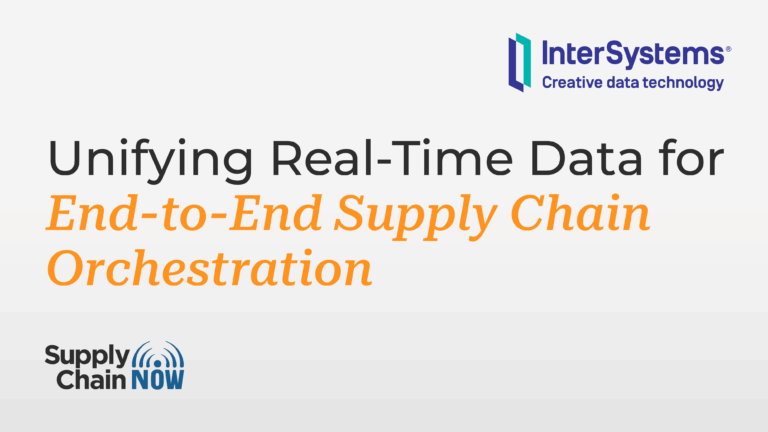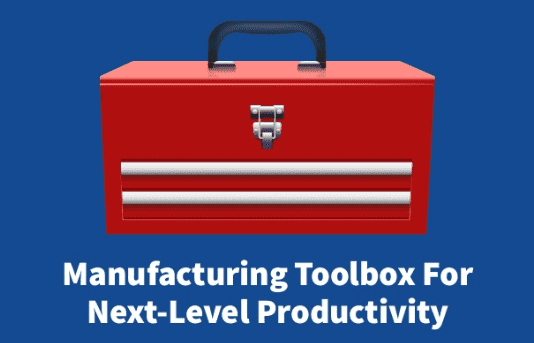
Unifying Real-Time Data for End-to-End Supply Chain Orchestration
Special guest post written by Chris Cunnane with InterSystems
Supply chain orchestration is the coordinated management of end-to-end supply chain activities, across planning, sourcing, production, logistics, and delivery, using technology, data, and processes to ensure that every moving part works together seamlessly.
It enables organizations to attain an agile and resilient supply chain model through the use of decision intelligence. This is achieved through the See > Understand > Optimize > Act framework, which gives organizations the confidence to plan and respond to disruptions with assurance in their supply chain stability.
- See: gather raw data and information from your environment or a situation.
- Understand: analyze the information you’ve seen to build a comprehensive understanding of the context, your knowledge, and potential complexities.
- Optimize: develop the best possible solution or course of action to address the situation.
- Act: implement your chosen solution, putting your knowledge into practice.
From a practical standpoint, this framework powers your supply chain application ecosystem with end-to-end visibility, insights, and better decisions. It helps organizations reach their supply chain goals by enabling them to align processes, stakeholders, and technology toward desired outcomes. The end result is reduced costs, improved operating margins, and optimized sustainability decisions, among others.
InterSystems surveyed 450 senior supply chain practitioners and stakeholders to examine key supply chain technology challenges, trends, and decision-making strategies across five common use cases: fulfillment optimization; demand sensing and forecasting; supply chain orchestration; production planning optimization; and environmental, social, and governance (ESG). This blog focuses on supply chain orchestration.
Supply Chain Orchestration Challenges and Response
Survey respondents were asked to identify the most significant challenges in supply chain orchestration. Leading the way was the absence of end-to-end visibility and operational transparency (48%). End-to-end visibility is important because it provides real-time, comprehensive data across an entire supply chain. This enables businesses to anticipate and mitigate risks, optimize operations, improve decision-making, increase agility, reduce costs, and enhance customer satisfaction. Operational transparency is a critical part of end-to-end visibility and is of utmost importance for senior management.
The second most significant challenge identified by respondents was the complexity of organization with multiple subsidiaries, divisions, partners, and suppliers (37%). Too many organizations operate in isolated silos, let alone subsidiaries or divisions. This includes enterprise technology systems and processes, which slow down data sharing and decision making. The siloed nature of many businesses makes it incredibly difficult to ensure that every moving part works together seamlessly.
The big question becomes how does a company respond to these challenges? Almost all respondents agreed that an ultimate control tower approach would most improve supply chain orchestration by giving them a unified view of their data (85%). Advanced solutions, such as predictive modeling, automation, and integrated digital platforms, play a key role in improving orchestration and addressing these challenges.
The Value of Ultimate Supply Chain Control Tower
A control tower provides predictive and prescriptive actionable insights that address disruptions and constraints along the entire supply chain. Control towers also help manage exception situations by identifying when predefined processes are disrupted and enabling timely manual or automated intervention to maintain smooth operations.
For instance, when a sudden shortage of raw materials threatens to halt production, a control tower can immediately provide updates on inventory levels, goods in transit, and alternative suppliers. This enables supply chain managers to prepare contingency plans, reroute shipments, or adjust production schedules in real time, minimizing risks and ensuring continuity of operations. The ability to monitor and respond to such events not only reduces the impact of disruptions but also enhances customer satisfaction by maintaining service levels and delivery commitments.
Additionally, control towers help companies gain a deeper understanding of their supply chain by connecting disparate data points and providing actionable insights. This holistic view allows organizations to identify bottlenecks, anticipate risks, and make informed decisions that drive efficiency and resilience. By leveraging the power of sensors and real time data, companies can provide better services, improve the flow of goods, and ultimately achieve a higher level of supply chain performance.
Final Thought on Supply Chain Orchestration
What if you could attain agility across the most complex and intricate global supply chains? InterSystems Supply Chain Orchestrator is a differentiated data platform that does just that, providing unique orchestration capabilities that lock in greater efficiency and higher revenues, with fast time-to-value. Its differentiating capabilities—such as advanced control towers, IoT sensor integration, and AI/ML-driven insights—set it apart from other solutions by enhancing supply chain visibility, responsiveness, and orchestration.
Read the full blog here.
More Blogs

Manufacturing Toolbox for Next-Level Productivity

